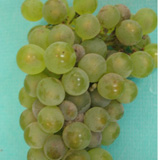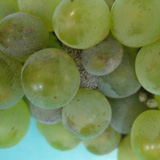Botrytis Bunch Rot of Grape Disease Prediction Model
Introduction to Botrytis Bunch Rot of Grape
Botrytis bunch rot can become devastating during wet seasons. Botrytis cinerea favors cool temperatures and rainy weather. The fungus spreads rapidly during rainy weather, especially when cool rainy weather occurs close to harvest. Vines with dense canopies or bunches with tight clusters create microclimates that are conducive for disease development.
Grayish mold grows profusely on surfaces of cracked, damaged (by insects, birds, or other diseases), or overripe berries. Large numbers of spores are produced, giving the fungus a “fuzzy” appearance. These spores initiate secondary infections under favorable conditions.
Fruit infection
Flower infection may occur and remain latent until veraison (berry coloring). Infected fruit may not show disease symptoms until sugar content becomes high. As weather becomes favorable for disease development, actively growing fungal bodies produce large amounts of spores, which can infect damaged or ripening fruit (Figures 1 & 2). The fungus may also cause girdling of pedicels or rachises (Figure 3). These woody infections, as well as fruit mummies, serve as overwintering sources for the fungus.
Leaf infection
Initial infections occur on buds and shoots during spring, causing irregular brown spots (Figure 4).
More information on Botrytis bunch rot of grape can be found in publication PPFS-FR-S-14.
Spray recommendations for commercial growers
Spray recommendations for commercial growers
ID232
and homeowners
ID-21
are also available online.




Figure 1. Botrytis bunch rot on ripening fruit.
Figure 2. Large numbers of spores are produced on infected fruit.
Figure 3. The fungus may also cause girdling of pecicels or rachises (Photo: T. Zabadal, Michigan State University)
Figure 4. Irregular brown spots occur on infected leaves (Photo: A. Schilder, Michigan State University)
Notes
Risk for Botrytis bunch rot is highest in spring during leaf emergence and bloom, and again in fall after berry coloring, especially during cool rainy conditions.
Prediction model is based on leaf wetness duration and average temperature during wetness events.
Instructions
• Select county from drop-down menu using arrows.
• Select today’s date to determine current risk for bunch rot. Other dates may be entered if assessment of past risk is warranted.
• Determine vineyard history.
• Click 'submit choices'.
These data are based on the 24 hour period 7PM to 7PM.
Data should NOT BE USED FOR LEGAL PURPOSES.